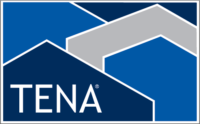In excess of 35,000 mortgage servicing Quality Control reviews were conducted during the first quarter of 2019 with nearly 2,000 unique audit exceptions cited by TENA auditors during that period. Those audit results were analyzed to identify emerging trends and common findings. The following audit findings were identified as being notable.
1. Audit Finding: (S004-07-200) The Notice of Loss Mitigation Options missed one or more pieces of required information.
The Real Estate Settlement Procedures Act (RESPA) §1024.39(b)(2) requires a servicer to provide a delinquent borrower with a written notice every 45th day of the borrower’s delinquency (Not more than once during any 180-day period). The notice to the borrower required by this section of RESPA specifies information that must be included in the letter. The written notice to the borrower must include:
| A statement encouraging the borrower to contact the servicer; The telephone number to access the servicer’s personnel that are assigned to the borrower and the servicer’s mailing address; If applicable, a statement providing a brief description of examples of loss mitigation options that may be available from the servicer; If applicable, either application instructions or a statement informing the borrower how to obtain more information about loss mitigation options from the servicer; and The website necessary to access either the Consumer Financial Protection Bureau list or the HUD list of homeownership counselors or counseling organizations, and the HUD toll-free telephone number to access homeownership counselors or counseling organizations. During the first quarter of 2019, TENA identified numerous instances where the notice sent to the delinquent borrower(s) was missing one or more elements of required content. The most common missing item was “A statement providing a brief description of loss mitigation options that may be available from the servicer”. |
TENA Recommendation: To ensure that notifications provided to the borrower include the required content, a periodic review of letter and notification templates is recommended. Such reviews can be performed using a targeted quality control audit or by including a general review of notice and letter templates as part of your firm’s routine and ongoing quality control or compliance procedures.
For guidelines regarding this matter, consult: RESPA 12 C.F.R. § 1024.39(b)(2); RESPA 12 C.F.R. § 1024, Appendix MS-4(A); RESPA 12 C.F.R. § 1024, Appendix MS-4(B); and RESPA 12 C.F.R. § 1024, Appendix MS-4(C)
Related Topic: It is important to remember the timing requirement of the Notice of Loss Mitigation Options. When a borrower remains delinquent at the end of the 180 day period following the date the original Notice of Loss Mitigation Options was provided, a subsequent Notice of Loss Mitigation Options must be provided. In the fourth quarter of 2017, TENA started to see increases of instances in the collection/default loan populations where this requirement had not been completed by the loan servicer and reported this in our trending findings. TENA auditors still consistently report findings for the timing of that subsequent notice. It is important to remember the subsequent notice depends on whether the loan is more or less than 45 days delinquent at that end of that 180 day period:
When a borrower remains 45 or more days delinquent after the 180-day period from which the original Notice of Loss Mitigation Options was provided, a subsequent Notice of Loss Mitigation Options must be provided within 180 days of the original notice.
If a borrower is less than 45 days delinquent at the end of any 180-day period after the servicer first provided the written Notice of Loss Mitigation Options, the servicer must provide a follow-up Notice of Loss Mitigation Options not later than 45 days after the payment due date for which the borrower remains delinquent.
It is important to note that the 2016 Mortgage Servicing Rule issued by the Consumer Financial Protection Bureau (CFPB), effective 10/19/17, provides additional direction and clarification on this matter. Under the early intervention requirements for certain borrowers, the Real Estate Settlement Procedures Act states the following:
(b) Written notice.
(1) Notice Required. Except as otherwise provided in this section, a servicer shall provide to a delinquent borrower a written notice with the information (b)(2) of this section not later than the 45th day of the borrower’s delinquency. A servicer is not required to provide the written notice more than once during any 180-day period. If a borrower is 45 days or more delinquent at the end of any 180-day period after the servicer has provided the written notice, a servicer must provide the written notice again no later than 180 days after the provision of the prior written notice. If a borrower is less than 45 days delinquent at the end of any 180-day period after the servicer has provided the written notice, a servicer must provide the written notice again no later than 45 days after the payment due date for which the borrower remains delinquent.
2. Audit Finding: (S002-12-014) The Periodic Statement provided to the borrower did not meet all amount due, content, and/or layout requirements.
The Truth in Lending Act (TILA) §1026.41: Periodic Statements for Residential Mortgage Loans outlines specific content and layout requirements regarding the format of Periodic Statements. In the past quarter, TENA has noted an increase in audit findings related to the Amount Due section of the Periodic Statement. TILA guidelines indicate that the Amount Due items must be grouped together, in close proximity to each other, and be located at the top of the first page of the Periodic Statement. Each listed Amount Due item must include:
- The payment due date;
- The amount of any late payment fee, and the date on which that fee will be imposed if payment has not been received; and
- The Amount Due must be shown more prominently than other disclosures on the page. If the transaction has multiple payment options, the Amount Due must be provided for each payment option. Also, there must be an explanation of each Amount Due item.
The following items are required to be grouped in close proximity to each other and located on the first page of the Periodic Statement:
- The monthly payment amount, including a breakdown that illustrates how much, if any, will be applied to principal, interest, and escrow.
- If the mortgage loan has multiple payment options, a breakdown of each of the payment options must be provided including information whether the principal balance will increase, decrease or stay the same for each listed option;
- The total sum of any fees or changes imposed since the last statement; and
- Any payment amount that is past due.
TENA Recommendation: Establish a repeating schedule for review of your firm’s Periodic Statements to ascertain that the specified requirements are being met and that each displayed Amount Due item does include an appropriate explanation or description.
For guidelines regarding this matter, consult: TILA 12 C.F.R. § 1026.41(d)(1) , TILA 12 C.F.R. Supplement I, § 1026.41(d); (d)(1), TILA Sample Form of Periodic Statement, TILA Sample Form of Periodic Statement with Delinquency Box, TILA Sample Form of Periodic Statement for a Payment-Option Loan
3. Audit Finding: (S004-07-028) Contact was made with the borrower; however, evidence the servicer obtained all required information for the borrower was not found.
TENA identified multiple instances wherein the servicer’s representative, when contacting the borrower during a payment collection attempt, did not provide evidence: a) that various required questions were asked of the borrower; and, b) that specific information required by agency and investor guidelines had obtained. To review a summary of the agency and investor guidelines visit the following link: https://tenaco.box.com/s/uz9gjvrf5725644n9jktjvtdy2e8my59.
TENA Recommendation: Exam your firm’s collection procedures and collection call scripts to ensure that the processes are compliant with all guidelines. Conduct a periodic quality control review of collection calls (or call recordings) to ascertain which mandated procedures are being adhered to and those that are not being met.
For guidelines regarding this matter, consult: FHLB MPF Xtra Servicing Guide, VA Servicer Handbook M26-4: 4.01, b(1-4), VA Servicer Handbook M26-4: 4.06, b(1-6), FHLMC Single-Family Seller/Servicer Guide, 9102.3(b), FNMA Servicing Guide D2-2-01, RHS 7 C.F.R. § 3555.303(a), RHS 7 C.F.R. § 3555.301(a), (d), (f)
4. Audit Finding: (S004-07-306) Copies of the electronic communications were not found in the file.
The FHA Single Family Housing Policy Handbook 4000.1 states: “The Mortgagee must document in their servicing file all mail and electronic communication attempts to reach a borrower with a Delinquent Mortgage.” Additionally, the FHA Single Family Handbook specifically requires that electronic communications contain the mortgagee’s email address, telephone number and/or website address. Furthermore, the FHA Single Family Handbook specifically identifies that this section must be covered in a firm’s QC Plan.
During the first quarter of 2019, TENA auditors identified many occurrences where electronic communications were used to reach out to, or respond to, borrower inquiries. While TENA’s auditors could typically verify that such electronic communications had been sent to the borrower; due to inadequate documentation in the system of record, increasingly the auditors were unable to verify the content of the communication and other pertinent information that is required.
TENA Recommendation: Review your firm’s procedural processes to ensure that they adequately capture the data required relative to each instance of electronic communication with a borrower. Then review your firm’s Quality Control Plan to ensure that testing procedures are in place to monitor whether all impacted employees are properly executing the firm’s electronic communication procedures. TENA recommends reviewing your firm’s electronic communication procedures as an extension of the monthly delinquent population reviews.
For guidelines regarding this matter, consult: FHA SFHPH 4000.1 – III.A.2.h.(vi)(A)(2)
5. Audit Finding: (S016-17-163) A supervisor in a position of authority higher than the person submitting the mortgage for foreclosure did not sign, or electronically acknowledge, that they reviewed and approved the document used to review the mortgage for foreclosure.
FHA specifies various actions that a mortgagee must take prior to the initiation of foreclosure. One such action requires the servicer to develop a form or checklist that will document that the mortgage has been reviewed for foreclosure. An individual who holds a position of authority higher than the individual who submits the mortgage for foreclosure (such as a supervisor, manager, et. al.) must either sign, or electronically acknowledge, that he or she has reviewed and approved the document that evidences the decision to foreclose.
TENA auditors have increasingly identified failures relative to the proper execution and/or documentation of these procedural requirements. The most commonly encountered errors include: a) no evidence that the signer of the foreclosure referral checklist was an individual in a position of higher authority; b) the name of the individual signing the form was either missing, not adequately annotated, or completely illegible; or c) the form in the file was devoid of signatures.
TENA Recommendation: Examine your firm’s policies and procedures to confirm that processes are in place that will ensure a higher-ranking official properly signs off on the foreclosure referral checklist. Additionally, routinely include a review of your firm’s foreclosure checklist during the monthly foreclosure quality control testing to help ensure the firm’s policy and procedures are being consistently followed by all parties.
For guidelines regarding this matter, consult: FHA SFHPH 4000.1 – III.A.2.r.(i)(F)







